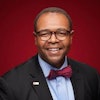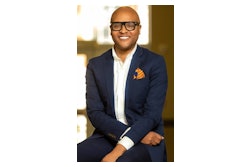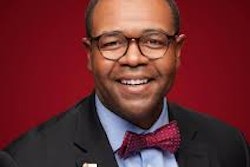May is Asian American and Pacific Islander Heritage Month, an unfortunate bit of timing for most campuses in the midst of finals, graduation and year-ending celebrations.
But if you want to find out more about the American Filipino experience, I’m bringing my one-man solo performance show, “Amok Monologues,” to the Orlando Fringe Festival from May 16-25.
I talk about a lava flow of truth to describe my storytelling amokness, a metaphoric eruption. Mt. Pinatubo in the Philippines was my frame.
This year, Madame Pele has delivered to us all a gift for AAPI Heritage Month.
I lived in Hawaii for a few years when I worked for what was then the largest paper in the state. I lived through an earthquake and a massive sewer backup on the Ala Wai (sort of like intestinal lava flow). But I can’t imagine what the residents are going through on the Big Island.
Not Oahu, but the one that has that city that the “Today” show’s Savannah Guthrie called “High-Low.”
Of course, Hilo is pronounced “He-lo.” Although when the talk is lava flow in Hawaii, it’s more like “She-lo,” if one is to be truly respectful while reporting on the burning black mass that eats up ground and all in her way.
In Ben Gutierrez’s report for KHNL, you can see the damage. The story is from the very first days of the lava flow, and there have since been warnings of acid rain and toxic air. But in Gutierrez’s report comes a healthy respect for the goddess of all volcanoes. “We’re just glad to be able to come here to experience the heat, the smoke, and some of the beauty of Madame Pele,” Gutierrez, a Filipino American reporter, says admiringly.
The beauty? This is Hawaii.
When you live on the island, Madame Pele always gets the last nod. It’s the reason taking any rock from the island is considered bad luck. Upset Madame Pele and your life might erupt.
“She is Pele-hounua-mea, Pele of the Sacred Land. She is Pele-‘ai’ houna, Pele the eater of land, when she devours the land with her flames,” wrote Herb Kawainui Kane in Pele: Goddess of Hawaii’s Volcanoes. “She who rules the volcanoes of Hawaii, and Mankind has no power to resist her. When Pele is heard from, her word is the final word.”
And so while there is havoc and devastation, and lives and land masses are altered, there is a sense of respect for this spiritual force of nature.
We don’t have that on the mainland. We’re more agnostic about natural disasters. Yes, they’re acts of god. But we don’t get more specific than that.
Having worked in Hawaii, I understand respect for Pele. It’s another aspect of diversity that gives us a full picture of the Kilauea eruption.
That’s what diversity gives us – a fuller sense of the truth.
This semester, I’ve had the honor to pinch-hit and teach a course on diversity in journalism at San Francisco State University.
Diversity in journalism? You mean the uphill battle that I as a person of color have waged against the media in radio, TV, newspapers and the web starting from the mid-70s?
You mean when Asian Americans were less than 1 percent of our country and people thought by my last name that I must be Mexican?
For me, teaching a course in diversity in journalism has been like a Vietnam vet coming back to teach the war to students who were eager to learn what too many people are willing to forget.
Being a person of color in the media during these formative times has not been easy. I started not long after the Civil Rights Act, and a few years after the Kerner Commission suggested news organizations reach out to hire Blacks. Asians? No one knew what a Filipino was. Chinese were excluded first, then the Japanese. Filipinos had to stand in line to be recognized, especially in an America that was trying to forget the spoils of the Spanish American War.
Imagine how every year since I began as a young reporter, the American Society of Newspaper Editors kept establishing the goal of our newsrooms looking like the nation’s population. Perfect mirror of the audience and the media reporting on it? The goals were never achieved. After failing each deadline, ASNE kept extending it another five to 10 years. It’s become a joke. And now the test is if newspapers will survive before ASNE can ever reach its diversity goals.
One thing for sure, the anti-diversity drum is being beaten loudly by Trump. Like global warming, he’s a diversity denier, blind to the reality that America’s minorities are fast become a majority.
I tell the students there is hope in a greater push for more diversity in reporting. Get more in. Represent different people who are left out.
Because too many people are left out of the mainstream, there are so many different places to get the news. It’s not just in one place. But the news ends up being somewhat segregated. Asian American press? That’s cool. But it’s like a modern version of the Negro Leagues in baseball.
The best diversity can do at this point seems to be to establish vertical silos addressing separate niche audiences. Separate and not always equal. The challenge for the future is to see if one entity can bring us all together as one and cover all our concerns.
It sure isn’t FaceBook.
The answer will be up to the diverse students in my class.
For now, let’s consider the joys of Asian American and Pacific Islander Heritage Month. And because of the 1965 Immigration law that lifted discriminatory quotas on Asians coming to this country, we’re now up to more than 21 million Asian Americans in the U.S.
Just think: before the 1965 law, Asians Americans were less than 1 percent of the population.
It’s like someone had placed an invisible wall and shut us all out. It’s called politics.
And now Hawaii is the most Asian American state by percentage (around 44 percent) and California is the largest by population (around 6 million), and I’m going to Orlando to do my show for AAPI Heritage Month, where the Asian population is like it is in most of America – around 2 to 3 percent. It’s like going back 20 years or more.
No doubt our visibility has improved. We’re dozens of Asian ethnicities under one broad umbrella to celebrate a sense of us. Chinese, Korean, South Asian, Filipino, Hmong, Vietnamese and more. See an aspect of it in my show on my American Filipino experience, perfect for May and heritage month.
And this year, Madame Pele is providing the heat.
Emil Guillermo is a veteran journalist and commentator who writes for http://www.aaldef.org/blog. You can follow him on Twitter @emilamok



















